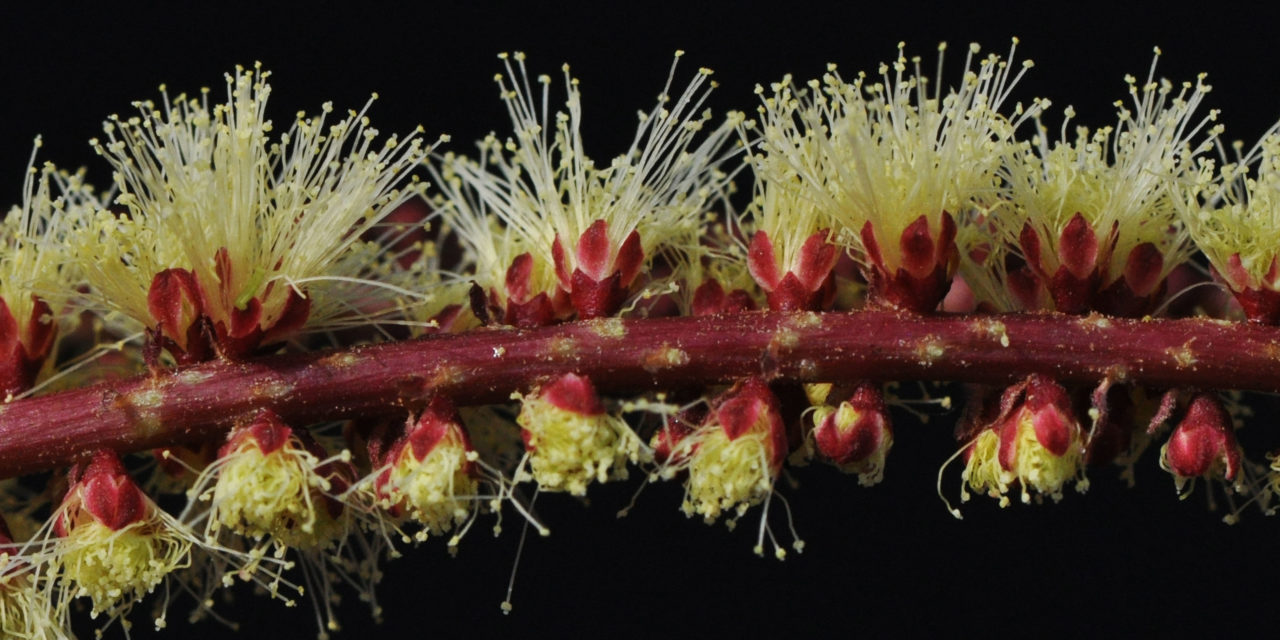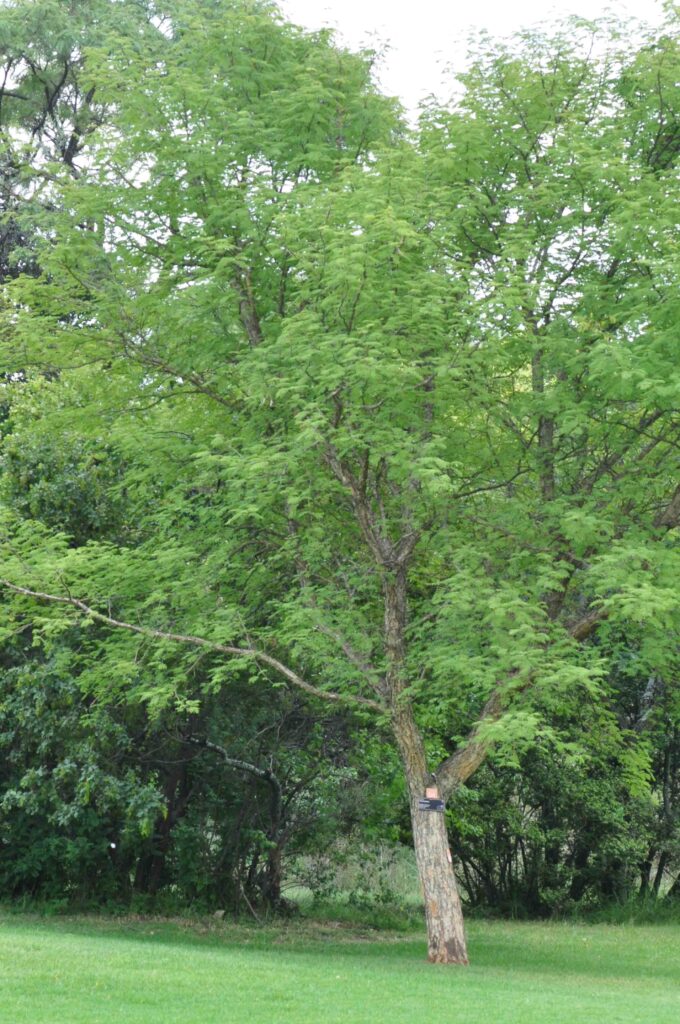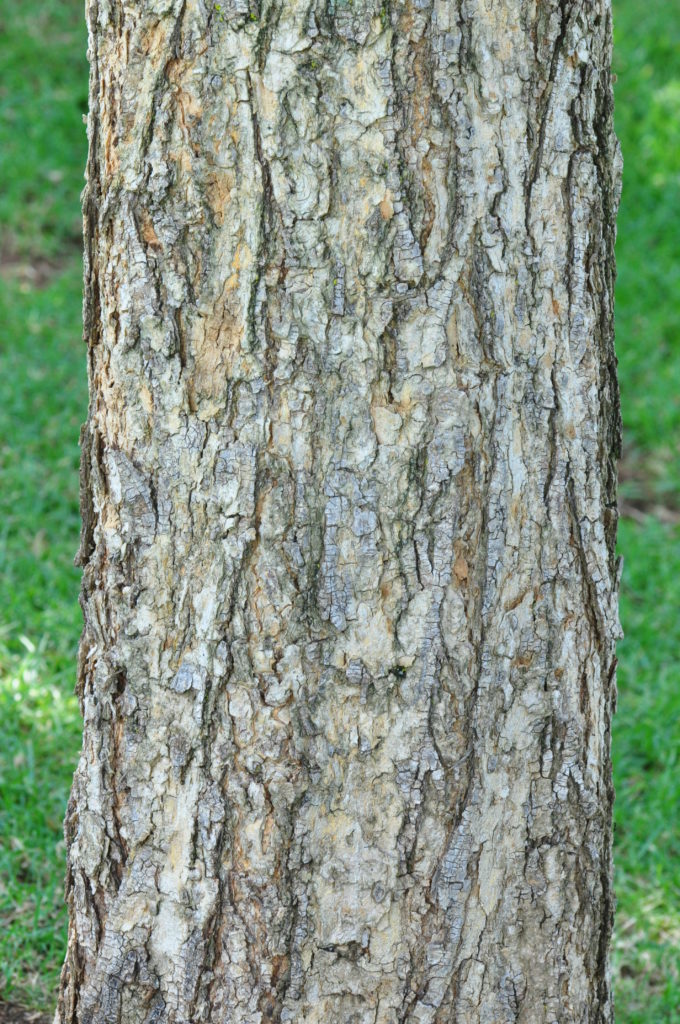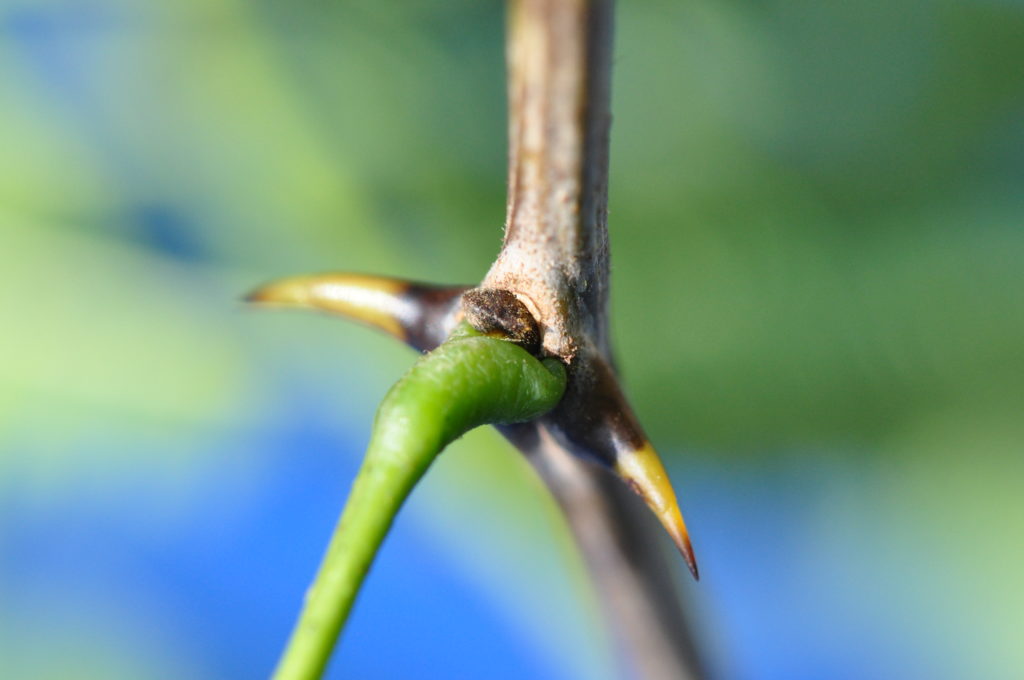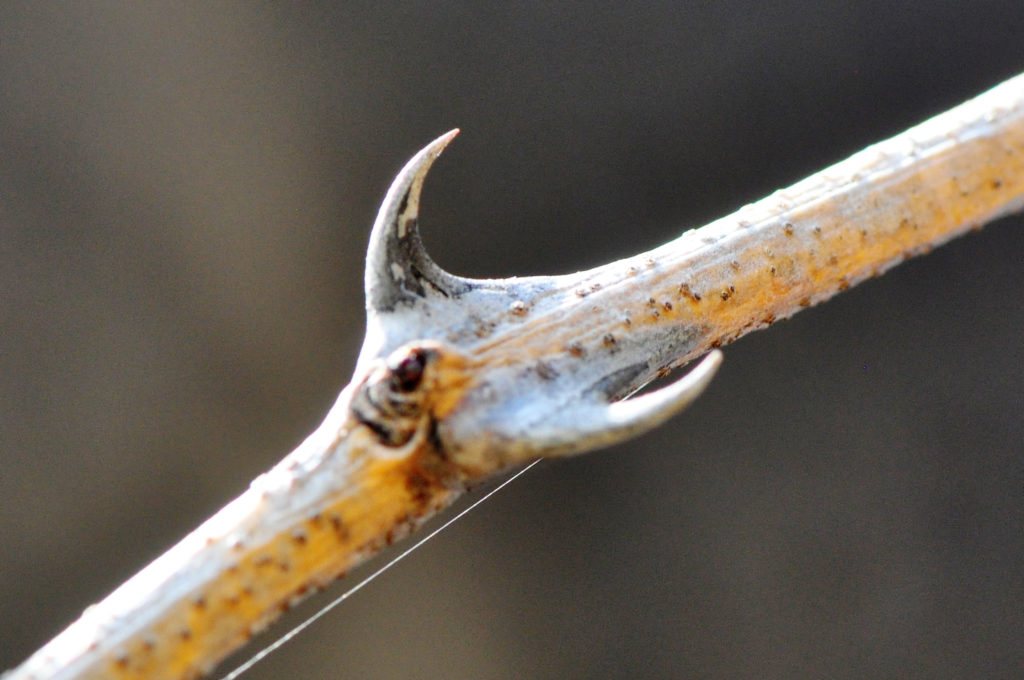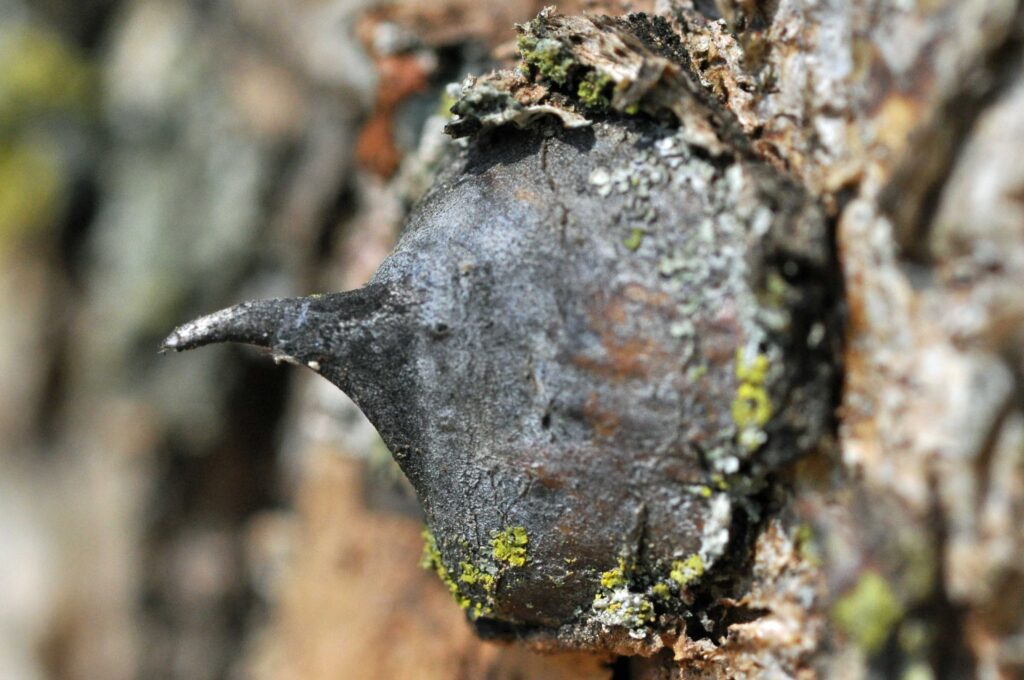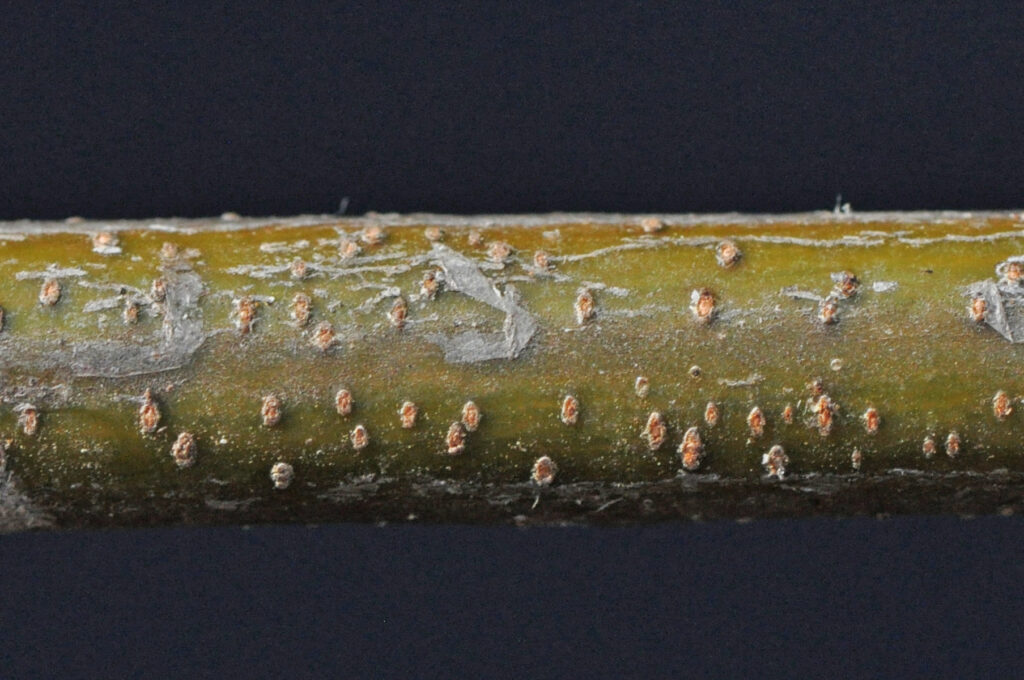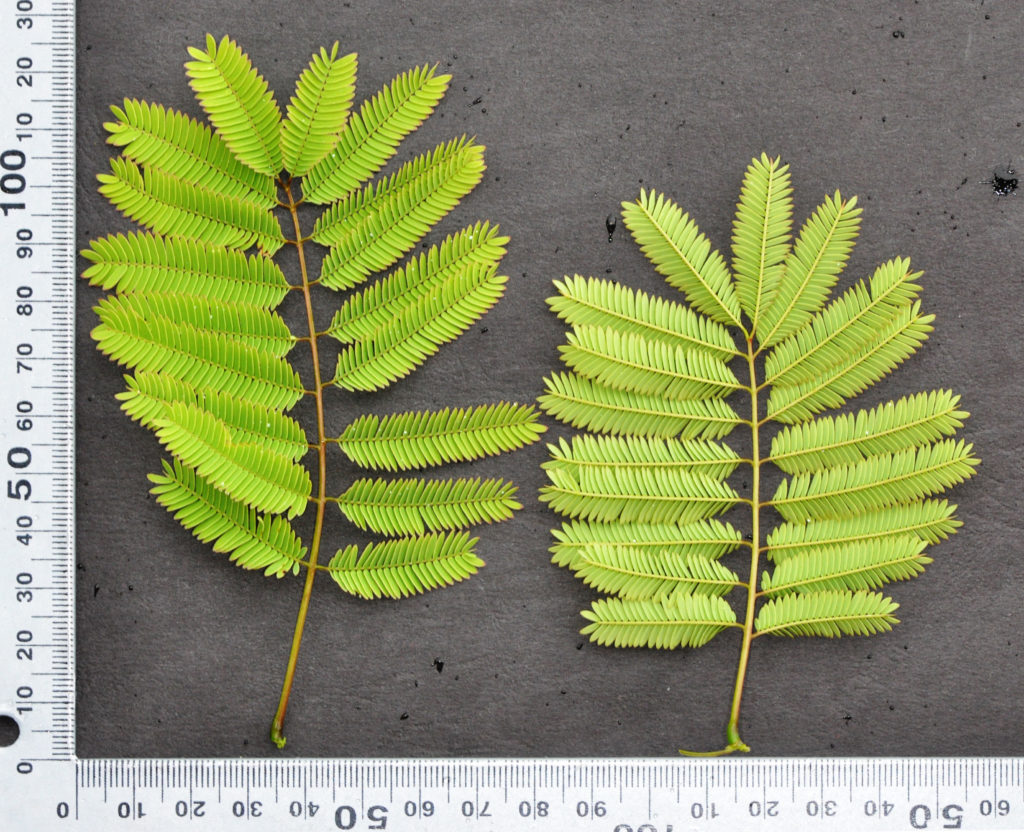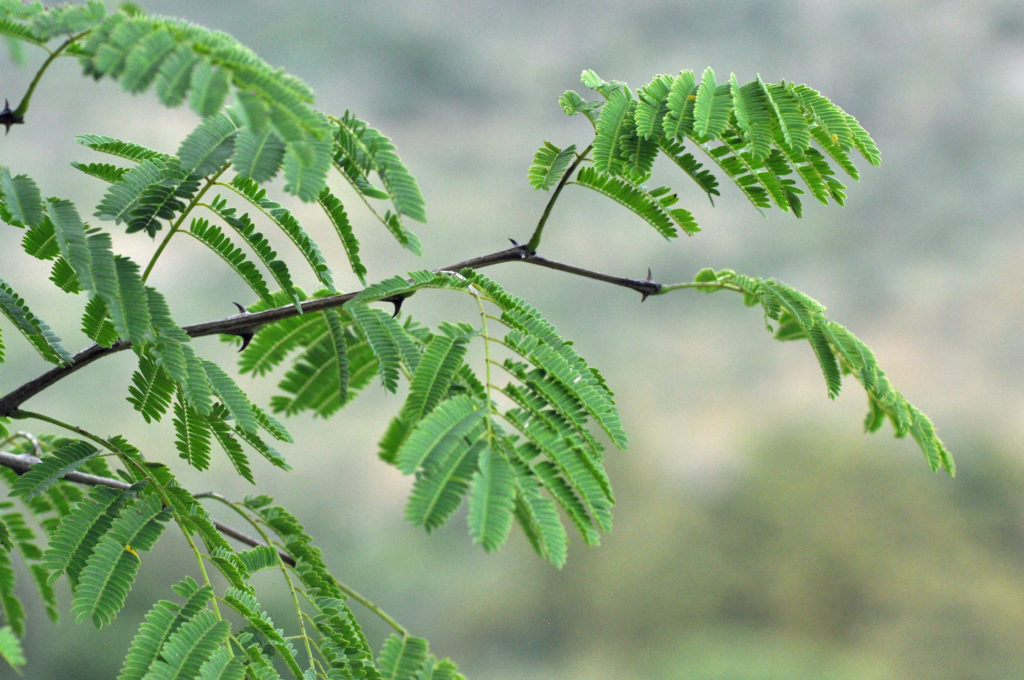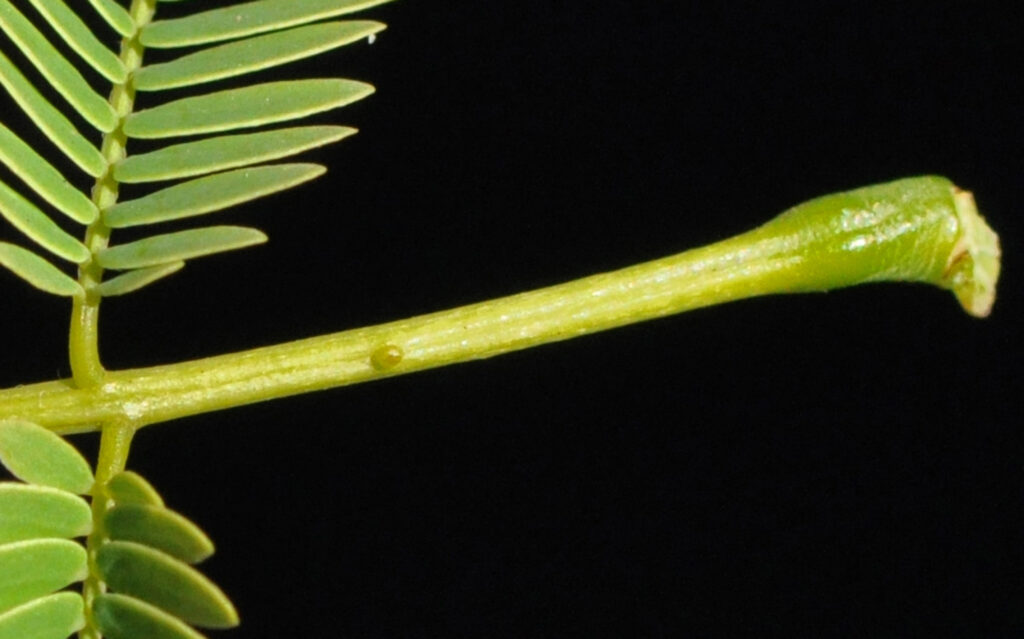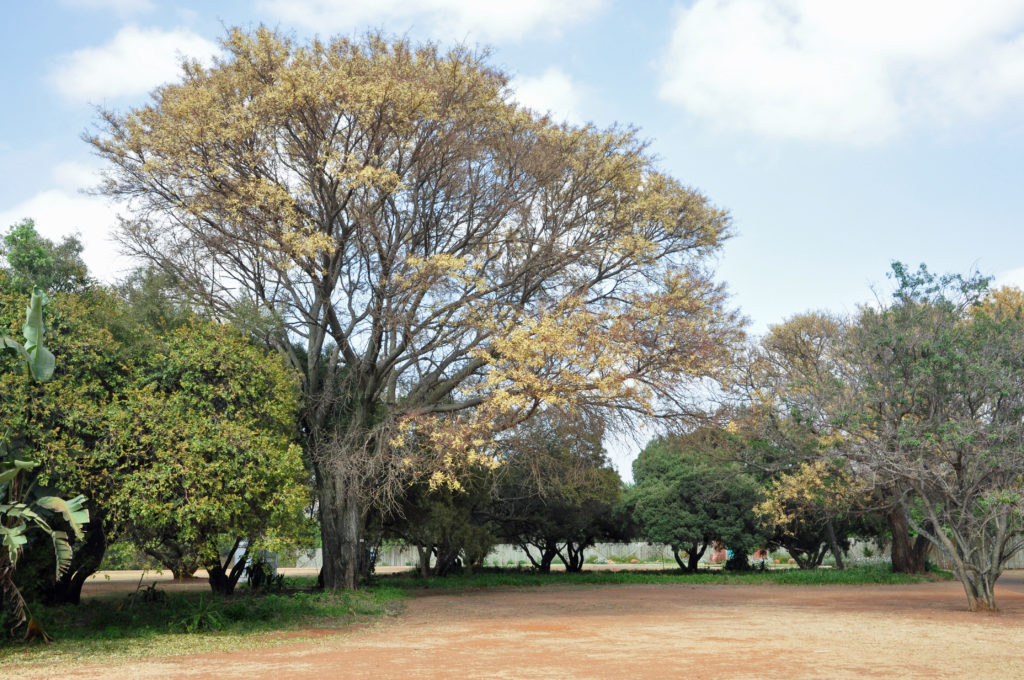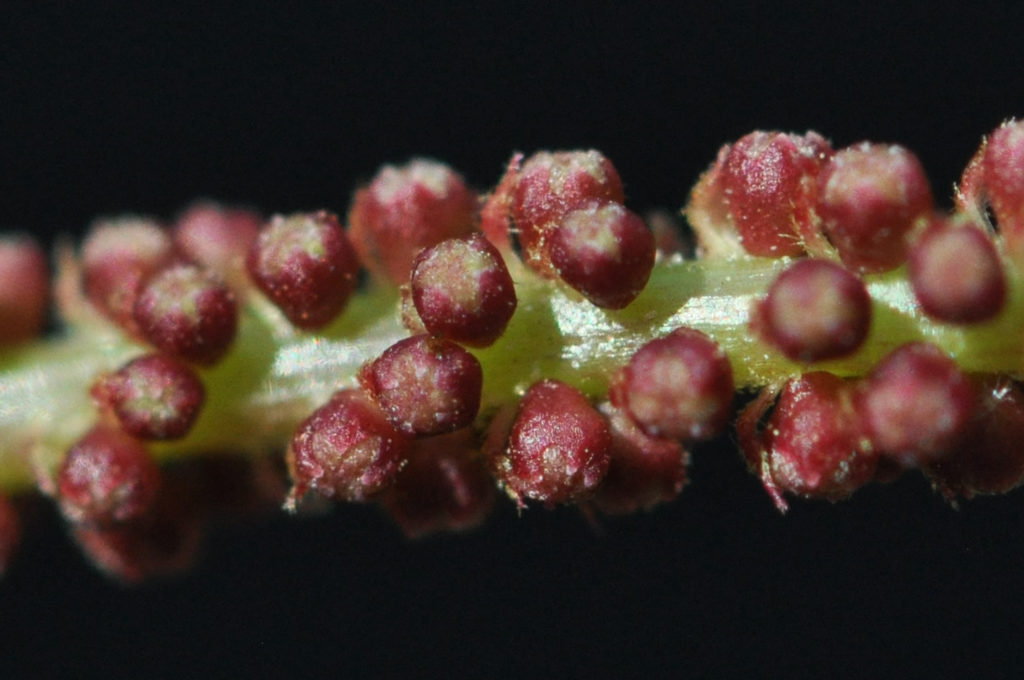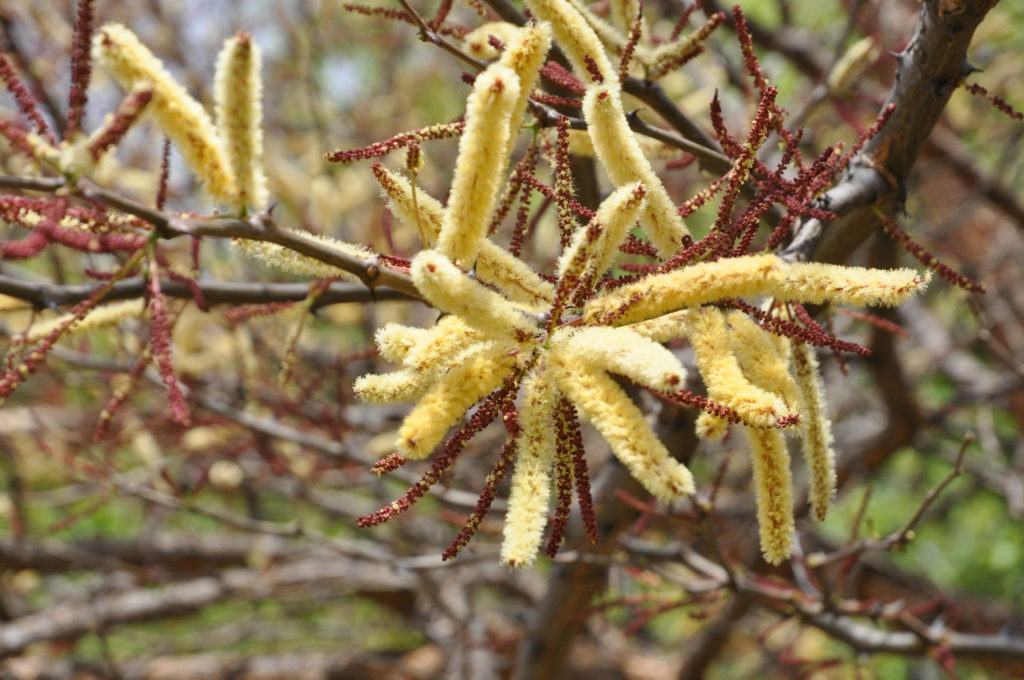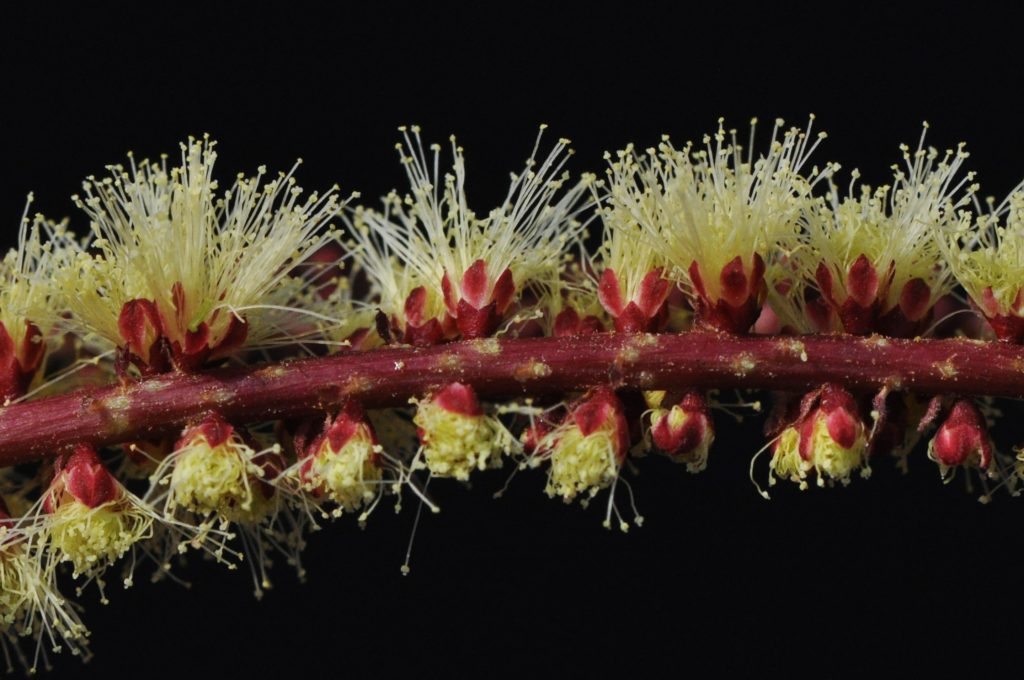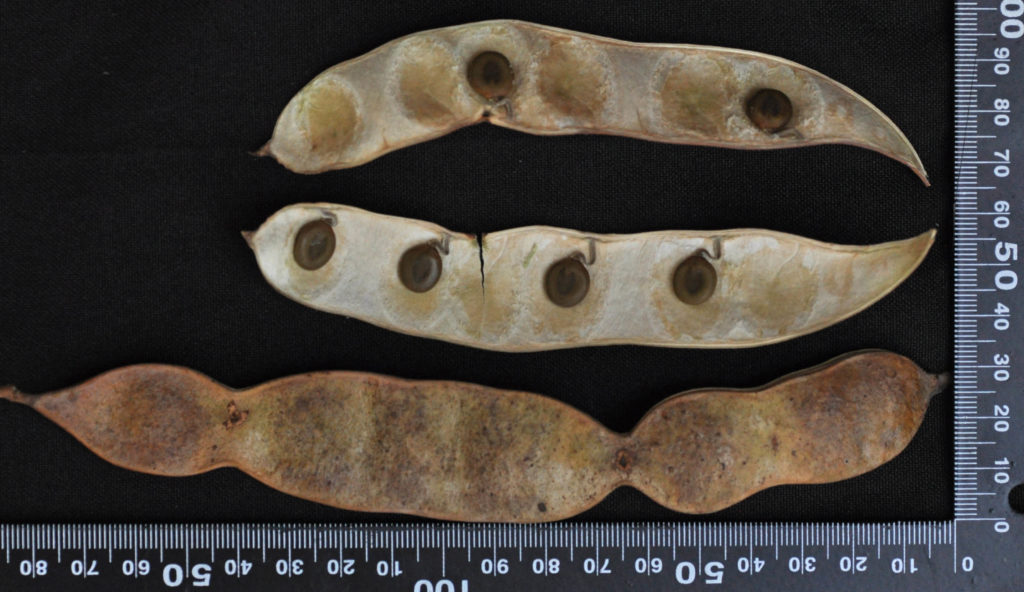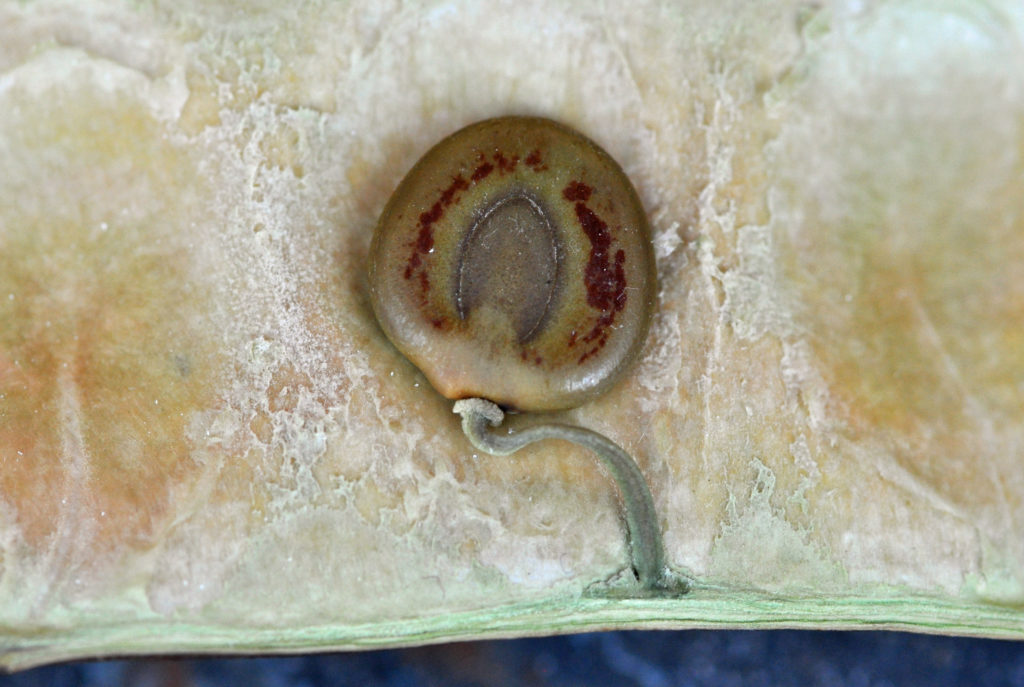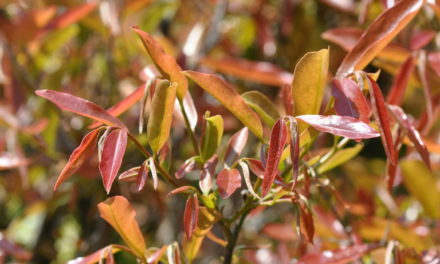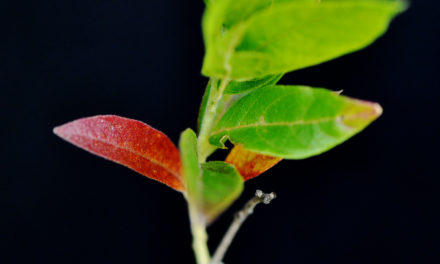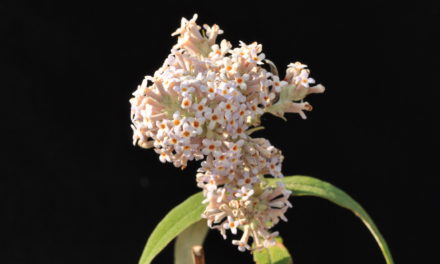General Info – summary
This large Tree may reach 30m high. It has a single trunk with single thorns on a swollen base. Branches usually have curved paired thorns. Bipinnate Leaves have non-spinescent stipules and many small densely packed leaflets. Small Flowers in spikes. The many extended filaments have yellowish stamens. Single pistil has a superior ovary with 1 extending style. The brittle Fruit is a dehiscent pod with flattened seeds.
Description
Senegalia galpinii
Previous Names: Acacia galpinii.
SA Tree No. 166.
Common names: (Afr) Apiesdoring, Bruinapiesdoring, Bruin-apiesdoring, Geelapiesdoring, Geel-apiesdoring, Sambreeldoring, Witapiesdoring. (Eng) Monkey Thorn, Umbrella Thorn. (Northern Sotho) Mokgapa, Mokgapo, Mologa (plaiting tree), Mooka-leselo. (Setswana) Mokala, Mokola, Moluba Moluha.
Family: Fabaceae, or Leguminosae (Pea, bean or legume family). After the Orchidaceae and the Asteraceae, the Fabaceae is the third largest Angiosperm (flowering plants) family with 700+ genera and close to 20 000 species. Local Tree genera on this website include Acacia (Vauchellia, Senegalia), Albizia, Bauhinia, Bolusanthus, Burkea, Calpurnia, Colophospermum, Cordyla, Cyclopia, Dichrostachys, Erythrina, Erythrophleum, Faidherbia, Indigofera, Mundulea, Peltophorum, Philenoptera, Piliostigma, Schotia and Xanthocercis. The Fabaceae are recognisable by their fruit and by their pinnately compound Leaves. Leaves may also be simple – even bilobed and usually have stipules – some of which may be spinescent. Leaflets are usually entire. Flowers are bisexual and bracteate. Regular flowers usually have 4-5 sepals and the same number of petals. Irregular flowers have 4-5 sepals and 5 or less petals. Stamens have anthers that have 2 pollen sacs and there are usually at least twice the number of stamens as petals – often 10. The superior Ovary has 1 locule containing 1 or more ovules. The Stigma and Style are simple. The single carpel develops into the Fruit, which is usually a pod. The mature pods may dehisce or break into segments. Seeds vary.
Name derivation. Species of the genus Vachellia and Senegalia were considered members of the genus Acacia until 2005. New Names. The genus Vachellia was named after George H. Vachell (1789 – 1839), chaplain and plant collector in China. Here the inflorescence is capitate (head like) and spinescent stipules are present. Plants in the genus Senegalia – (from Senegal) usually do not have spinescent stipules and the inflorescence is usually a spike. galpinii – Named after Dr E. E. Galpin. General Smuts called him the prince of collectors. Galpin wrote a popular book called “The native timber trees of the Springbok flats”. He collected this type specimen near Naboomspruit / Mookgophong in 1920.
Conservation: National Status: L C. (Least Concern). Assessed: 2005 (W. Foden and L. Potter).
Tree
This big, typically symmetrical Tree with a rounded crown may reach 30+m high. This is one of the tallest “acacias” and has a single Trunk (photo 636) up to 1,5m wide. This trunk may be fluted (grooved, funnelled or channelled – photo 91). The Bark is initially whitish-yellow or greyish-brown (photo 491). In young trees it is flaking and corky and becomes brown or blackish and longitudinally furrowed when mature. Isolated, persistent and curved single thorns with a swollen roundish base may occur on the trunk (photo 755). Young Branches are creamy yellow, olive brown to dark-reddish brown or purplish and may be pubescent. These widespread branches have stout, shiny brown pairs of Thorns. These may be straight but are usually curved (photo 271) or hooked (photo 1 225). Each is up to 1,2cm long and develops just below the nodes – near the leaf base. Lenticels (a usually raised corky, oval or elongated area on the plant that allows the uncontrolled interchange of gases with the environment) are present on young branches (photo 78).
- 636. 2014/01/21. Walter Sisulu NBG. Photo: David Becking.
- 491. 2016/02/16. Walter Sisulu NBG. Photo: David Becking.
- 91. 2017/09/19. Pretoria NBG. Photo: David Becking.
- 271 2014.02.06 Linden. Photo: David Becking.
- 1225 2015.08.18 Walter Sisulu NBG. Photo: David Becking.
- 755 2017.11.06 Linden. Photo: David Becking.
- 78 2017.09.18 Linden Photo: David Becking.
Leaves
On this deciduous tree, the young light green new Leaves are most impressive in spring. The leaves are Bipinnate (compound: twice-pinnate). The Rachis or central axis is an extension of the petiole – the leaf base of a compound leaf that eventually bears the leaflets. Here the central axis has lateral pinnae “branches” not leaflets and the pinnules “Leaflets” are on these “side branches” (photo 617). Leaves are up to 16cm long, with 6-14 pairs of pinnae, which curve downwards from the rachis (photo 986), each bearing 13-40 pairs of fine smooth Leaflets. The leaflets are small oblong, hairless, up to 11 x 3mm and may be slightly falcate (sickle shaped). Lateral veins are indistinct. Glands are visible along the rachis at the base of some pairs of the oppositely arranged pinnae. The hairy Petiole (leaf stalk) is up to 4 cm long, has a swollen base and a small gland on the upper surface (photo 994) in a variable position. Indistinct Petiolules (stalks of leaflets of a compound leaf) are up to 3mm long. Stipules (basal appendages of the petiole) are not spinescent (lack spines) and fall early. Leaves are usually hairless. The leaves on Mozambique trees are slightly hairy. Leaves may only fall in the middle of winter.
- 617 2014.11.11 Walter Sisulu NBG. Photo: David Becking.
- 986 2018.03.07 Walter Sisulu NBG. Photo: David Becking.
- 994 2015.11.24 Walter Sisulu NBG. Photo: David Becking.
Flowers
This flowering tree is an impressive site (photo 93). Each creamy-white to yellow Inflorescence is up to 11cm long (photo 1051) and develops on an elongated Spike (simple indeterminate inflorescence with sessile flowers on a single unbranched axis opening in succession towards the apex). Buds (calyx with its sepals) are red to purplish–brown (photo 449). The purple colour is unusual for this genus. This is one of the earlier flowering Senegalia that usually appear before the new leaves. The individual, bisexual flowers are actinomorphic (Regular, symmetrical. Flowers are vertically divisible into similar halves by more than 1 plane passing through the axis). The flowers open in spectacular fashion (photo 1051) and flowering often occurs following a good rainfall. In this photo, the spikes with red buds are clearly visible. The Calyx with its red to purple Sepals is very short – up to 1,3mm (photo 82). The Corolla with its Petals is up to 2mm long and is also red or purple (photo 82). The many exserted (sticking out, projecting beyond) Stamens (caused by the long yellowish Filaments) are free, and are responsible for the flower colour. There is a single Pistil (a unit of the Gynoecium, the female element of the flower, composed of the Ovary, Style and Stigma) and the superior Ovary has a single locule. A small, single, terminal Stigma and a filiform (thread or filament like) Style are present. Once its own pollen has been shed, the style extends beyond the stamens and becomes receptive to pollen. This delay helps to prevent self-pollination. (Sep-Oct+).
- 93. 2017/09/19. Pretoria NBG. Photo: David Becking.
- 449. 2019/09/24. Linden. Photo: David Becking.
- 1 051. 2013/09/30. Linden. Photo: David Becking.
- 82. 2017/09/18. Linden. Photo: David Becking. Dissected.
Fruit
The dehiscent, reddish to purple or light brown, hairless, thinly woody and brittle Fruit is a Pod (photo 440). This pod is up to 28 x 3,5cm, nearly straight and almost flat with slight compressions between seeds. It may have a purplish tinge. The flattened Seeds are olive-brown and up to 1,5 x 1,2cm. A clearly visible horseshoe mark is visible on the seed (photo 540). Also visible here is the Funiculus (the stalk that attaches an ovule or seed to the wall of the ovary). (Dec-Mar+).
- 440. 2014/09/24. Linden. Photo: David Becking.
- 540. 2018/08/16. Linden. Photo: David Becking.
Distribution & Ecology
This Tree develops best in low frost areas, in bushveld, open woodland and often close to riverbanks. It grows best in summer rainfall areas and can withstand long periods of drought. This tree is common up to an altitude of about 1 500m. Provincially they occur in KwaZulu-Natal, Gauteng, western Mpumalanga, Limpopo and North West. Beyond South Africa, they occur in Zimbabwe, Botswana, Swaziland, central Mozambique, Malawi, Central Tanzania, the Sudan and Nigeria. The tree Roots have the bacteria (Rhizobium and Bradyrhizobium) which fix atmospheric nitrogen in a symbiotic relationship, which benefits the tree, the bacteria and, eventually, the surrounding vegetation. Rhizobium and Bradyrhizobium are a class of gram-negative bacteria that are free living in the soil or in an interaction with the roots of Leguminous plants which lead to the development of root nodules. Young trees Coppice (growth occurs from the trunk, shoots or root suckers) well. Apart from pods dehiscing, animals consuming the pods also disperse the seeds. Flowers attract insects like wasps and bees, which aid in cross-pollination.
Ethnobotany
The Wood is hard, coarse grained, relatively dense with a pale brown sapwood and a darker heartwood. Density is about 800kg per cubic metre at 11% water content. As a result, it will float in water. It serves as a general-purpose timber and is a difficult timber to work but, with an effort, good furniture can be made. Wood is used for railway sleepers and as mining timber. The inner Bark is cut into strips about 1,3cm wide. These strips are made into big shallow circular winnowing dishes. These dishes are light, strong and durable. Flowers attract wasps and bees (good for honey). The tall, thorny tree acts as a refuge place for monkeys. Leaves permit sufficient sun to penetrate and allow grass to grow below the tree. Relatively fast propagation can occur using non-parasitized Seeds. These should be soaked in hot water the night before planting and covered with river sand on the ground. The extensive aggressive Roots may damage buildings. Growth rate may reach 1m per year. Once established this tree is relatively frost-hardy.
References
Burrows, J.E., Burrows, S.M., Lotter, M.C. & Schmidt, E. Trees and Shrubs Mozambique. Publishing Print Matters (Pty) Ltd. Noordhoek, Cape Town.
Coates Palgrave, M. 2002. Keith Coates Palgrave Trees of Southern Africa, edn 3. Struik, Cape Town.
Foden, W. & Potter, L. 2005. Senegalia galpinii (Burtt Davy) Seigler & Ebinger. National Assessment: Red List of South African Plants version 2020.1. Accessed on 2023/12/20.
Lawrence, G. H. M, 1951. Taxonomy of Vascular Plants. The Macmillan Company, New York. Tenth Printing 1965.
Palmer, E. & Pitman, N. 1972. Trees of southern Africa. Balkema, Amsterdam, Cape Town.
Ross, J. H. A conspectus of the African Acacia Species. 1979. Botanical Research Institute.
Schmidt, S. Lotter, M. & McCleland, W. 2002. Trees and Shrubs of Mpumalanga and the Kruger National Park. Jacana, Johannesburg.
van Wyk, B. & van Wyk, P. 1997 Field guide to Trees of Southern Africa. Struik, Cape Town.
http://pza.sanbi.org/senegalia-galpinii
http://www.plantzafrica.com/plantab/acaciagalpin.htm
http://uses.plantnet-project.org/en/Acacia_galpinii_(PROTA)
http://posa.sanbi.org/flora/browse.php?src=SP
https://plants.jstor.org/compilation/Acacia.galpinii

